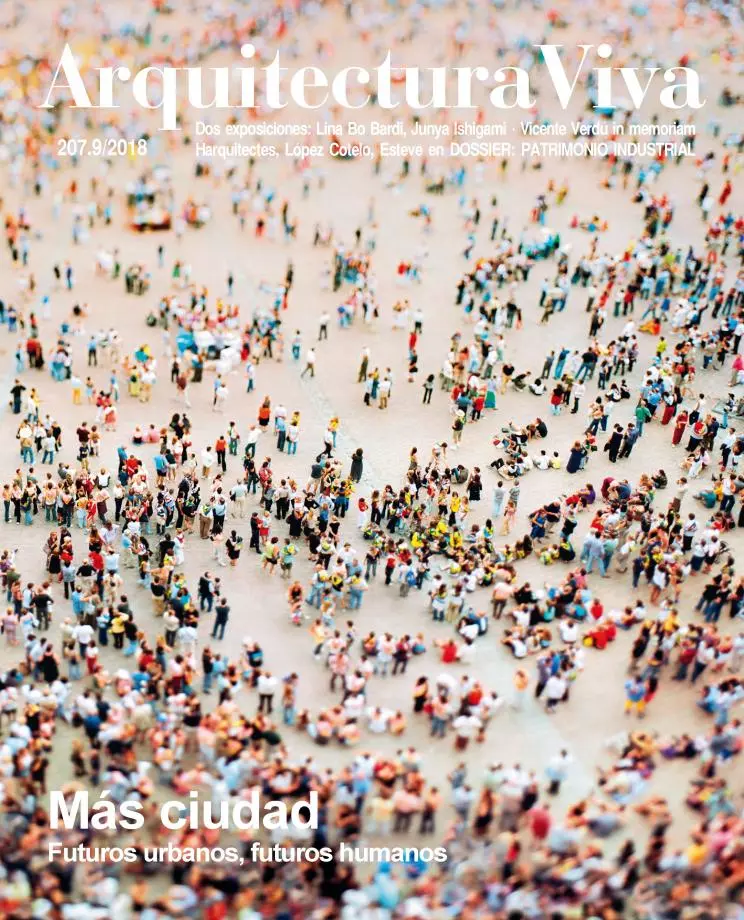More City
Cities First

Architecture and architects were the protagonists of the first four international congresses of the Fundación Arquitectura y Sociedad. The fifth, held again at Pamplona’s Baluarte, marked the start of a new cycle focused on the city, because the urban revolution is the great challenge of our time. More than half of the world’s inhabitants already live in cities, so the ‘passengers of Spaceship Earth’ are now mostly urban. In 1972 the astronauts of Apollo 17 photographed our ‘blue marble,’ making us aware that we share a common destiny, and forty years later NASA used satellites to show Earth at night, a ‘black marble’ where lights mark the unanimous extension of cities. This exponential growth improves the lives of millions, and over the past twenty-five years no less than 137.000 people have abandoned extreme poverty every day.
But accelerated urbanization also creates new problems, with the sprawling growth of cities. Architects used to have their emblem in the busy construction of the Tower of Babel, and yet today we are facing a horizontal Babel, which spreads over the territory without measure, increasingly consuming land, water, energy, infrastructures, and transit time. Faced with this unsustainable suburbanization we must defend dense, compact, and complex cities as the best setting for living. If we solve the triple problem of health, safety, and congestion, cities become humanity’s best invention, places where innovation and prosperity converge, and spaces for encounter and relation. Though it might seem paradoxical, cement is greener than grass, because living together in dense cities is more sustainable than surviving separately in suburban homes.
The urgencies of climate change, together with the necessary transition from fossil fuels to renewable energy sources, force us to think about ‘Spaceship Earth’ in a different way. The human impact on the planet has been so huge since the Industrial Revolution that many scientists propose the name Urbanocene for this new era of the Quaternary period. However, and considering that this impact is expressed mainly through the cities that illuminate Earth at night, our time could also be called Urbanocene, as suggested in the previous issue of Arquitectura Viva. Faced with such pressing challenges, architects and urban planners, as much as the mayors who govern cities and the writers who make them theirs and ours, can only oppose the imaginative dimension of our shared project, and that was in the end the guiding thread of the Pamplona event.





